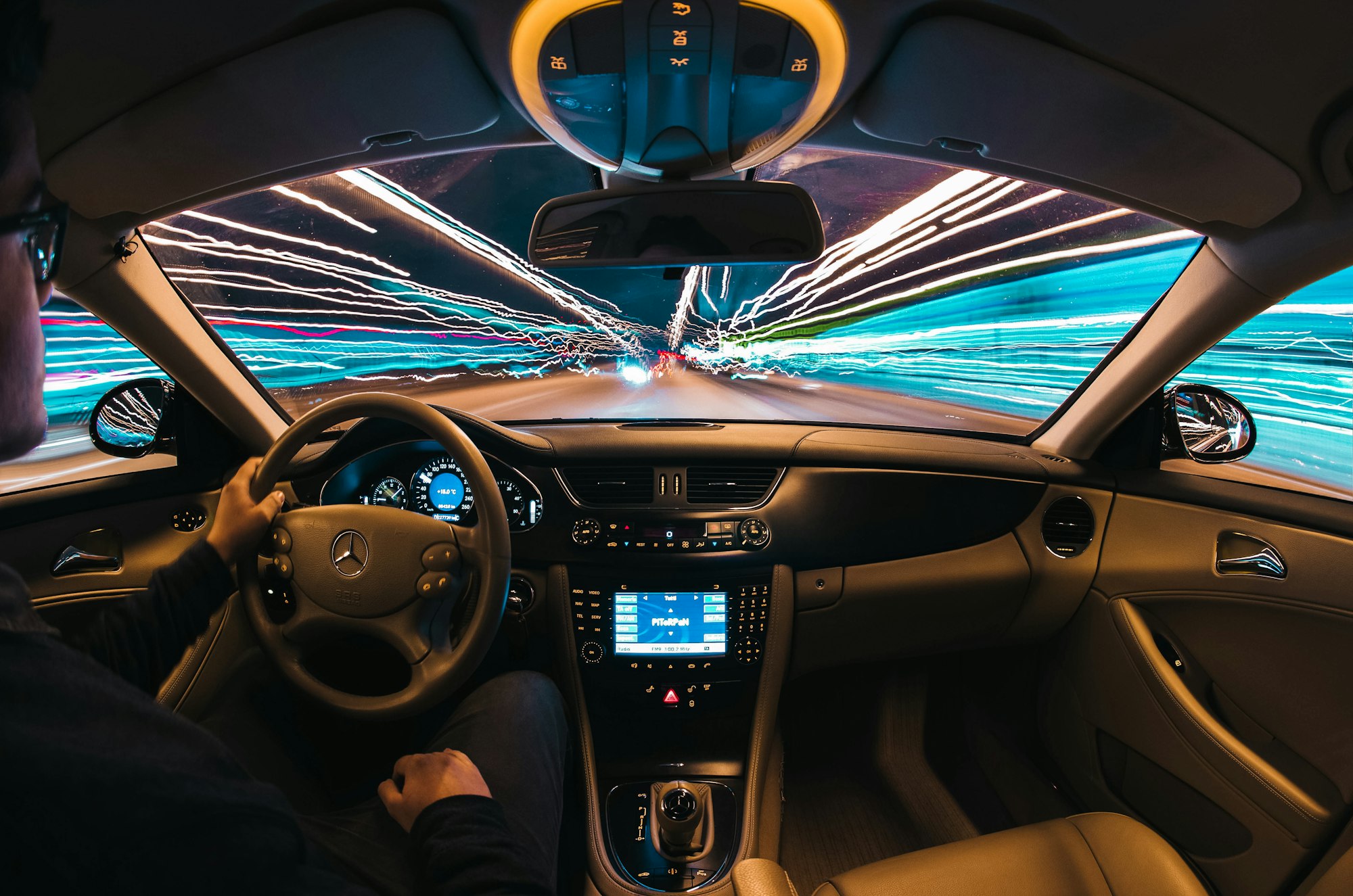We dive into the top drivers and challenges in computer vision that survey respondents highlighted, as shown in our Computer Vision Landscape report.
In this article, we'll cover:
The 6 top drivers in computer vision:
- Growing demand for computer vision solutions
- Increasing need for automation
- Increasing demand for vision-guided robotic systems
- Growing adoption of Industry 4.0
- Growing demand for AI in computer vision
- Increased manufacturing of autonomous vehicles
The top 4 challenges in computer vision:
- High costs
- Lack of experienced professionals
- Size of required data sets
- Need for regular monitoring
6 top drivers in computer vision
The growing demand for computer vision solutions was highlighted as the number one motivator for developing computer vision, with 29.2% of votes. Growing demand for AI in computer vision (at 25%) and the increasing need for automation at (21%) were the second and third key motivators.
Now, let’s take a closer look at these key motivators driving the development of computer vision solutions:
1. Growing demand for computer vision solutions
With the global computer vision market expected to reach a value of US$30.94 billion by 2028, it’s no wonder that there’s been an increase in the demand for its solutions.
Businesses and consumers are adopting computer vision applications like object recognition, vehicle tracking, and face recognition. As the market expands, so does the need for skilled workers capable of developing and maintaining those applications.
Companies like Intel are investing in the autonomous vehicle industry, which – expected to rise to US$7 trillion by 2050. Netflix, for example, uses computer vision to harvest static image frames for digital merchandising. With one single episode of Stranger Things having almost 86,000 static video frames, it’s easy to see why.
2. Increasing need for automation
The demand for workflow automation processes alone is expected to rise to US$26 billion by 2025. Automation lets machines complete tasks with minimal to no human intervention, which frees employees from repetitive actions that machines can perform more efficiently.
Artificial intelligence and automation are changing how businesses operate, with new generations of robots appearing in areas like automated check-outs in grocery stores. SpaceX, for example, has used AI and automation to help astronauts dock successfully into the International Space Station (ISS).
3. Increasing demand for vision-guided robotic systems
Vision-guided robotic systems are machines that use cameras and sensors to better understand their environment. This market is divided into 2D and 3D vision-guided robotics.
2D robotic systems don’t have depth perception, and their accuracy is limited when working with precision tasks. They’re still useful, however, in both industrial and non-industrial settings.
3D robotic systems have a single camera lens for accurate images of their surroundings. They can produce dynamic images for better accuracy and can work in both static and dynamic environments.
4. Growing adoption of Industry 4.0
Governments stimulate manufacturing by investing in research and development programs. This allows for innovative technology research and higher economic growth.
The automated industrial market is expected to grow exponentially, as the demand for industrial automation rises. Behind this adoption are government incentives, rising manual labor costs, and strict workplace regulations, as well as more SMEs adopting automation.
5. Growing demand for AI in computer vision
The market for artificial intelligence in computer vision is expected to be worth US$144.46 billion by 2028. The rising demand for automation, quality inspection, and computer vision systems is behind this growth.
Computer vision systems and software are continuously being developed for new applications in industries such as traffic management, healthcare, document processing, security and surveillance, and more.
AI-enabled computer vision systems are increasingly popular, with potential in areas like consumer electronics.
6. Increased manufacturing of autonomous vehicles
The autonomous vehicle market is predicted to rise in value to US$11.03 billion by 2028. These self-driving cars can read and sense their surroundings, operating with little- to- no human input.
There has been a rapid evolution in high-definition mapping, sensor-processing technologies, adaptive algorithms, and deployment of infrastructure-to-vehicle and vehicle-to-vehicle communication technologies.

4 top challenges in computer vision
The size of required data sets was highlighted as the biggest limitation in computer vision, receiving 42.3% of votes. High costs (at 20.4%) were indicated as the second biggest limitation.
It’s also worth noting that those who responded with “Other” mentioned limitations including a lack of suitable silicon, privacy or data security, lack of data, and lack of resources.
Now, let’s take a closer look at the biggest limitations of computer vision:
1. High costs
Comparing computer vision platform costs isn’t easy, as they have high variability when it comes to functionality. It also leads to unexpected costs when software products do not provide the necessary infrastructure, or when they need additional products.
An application’s architectural design and infrastructure are big determinants of total costs. A web application that analyzes a few images per minute has vastly different requirements than an always-on computer vision system that processes multiple video streams in real-time.
As computer vision involves resource-intensive complex tasks like image recognition, powerful processors and complex software increase expenses exponentially. But computer vision doesn’t have to be expensive:
- Focus on privacy and security. Breaches of privacy or security can lead to extremely high costs, even though implementing best security practices is also expensive. It’s vital to have computer vision running on monitored and hardened infrastructure, with all data and communication encrypted.
- Use image pre-processing. Pre-processing methods optimize and standardize images before they are fed into a deep learning model, giving the model better accuracy.
- Run computer vision at the edge. It can be more cost-effective to run computer vision at the edge, especially for scalable, low-latency applications, in comparison to Cloud APIs.
- Use low-code/no-code engineering. Reducing the amount of manual coding speeds up application delivery, allowing for building, deploying, and updating at much faster speeds with reduced risk.
- Use next-gen deep learning models. Up-to-date frameworks make big leaps in real-time in techniques like real-time object detection performance.
- Invest in cross-platform solutions. Depending on just one machine learning platform or hardware manufacturer platform isn’t ideal. To decrease costs, it’s important to have the ability to use and exchange cross-platform hardware and software.
2. Lack of experienced professionals
With more companies developing and implementing computer vision applications, it’s important to have the right professionals to bring ideas to reality. With hundreds of thousands of artificial intelligence professionals across the globe but millions of roles available, the skills gap needs to be bridged.
The demand for professionals has increased with the democratization of artificial intelligence and deep learning applications, which led to corporations and startups alike beginning work in the field.
The skills gap can be addressed by increasing resources for digital, technical, and math education. Companies like Amazon and Google invest internationally to expand their talent pool, but companies can also focus on retraining and upskilling current employees.
3. Size of required data sets
Models are only as good as their data. Models should train on more examples than trainable parameters. Google, for example, trains simple linear regression models on large data sets. A small data set, with 150 examples, won’t be as successful as one with trillions of examples.
But quantity isn’t everything – quality matters too. By choosing the option that offers the best outcome, a quality data set will accomplish its task. When collecting data, having a more defined idea of quality is important. Better-performing models have:
- Reliability. How much can you trust the data? Are there a lot of label errors? Are features noisy? Is data properly filtered?
- Feature representation. The mapping of data to useful features – how is the data shown on the model? Should numeric values be normalized? How should outliers be handled?
- Minimized skew. Different results can be computed for metrics at training time versus serving time. Skew can be subtle but completely destroy your results, so keep in mind what data is available to your model at prediction time.
4. Need for regular monitoring
Technical issues and breakdowns to computer vision systems can prove incredibly disruptive to businesses. Companies need a dedicated in-house team to monitor and evaluate their computer vision systems.
This team needs to conduct regular and unplanned maintenance, and update and change algorithms as required. Testing changes can be a long and time-intensive process.



 Follow us on LinkedIn
Follow us on LinkedIn



